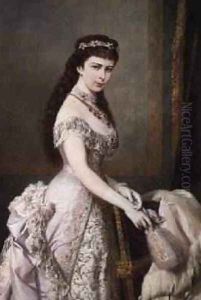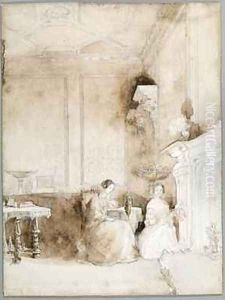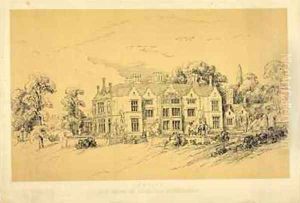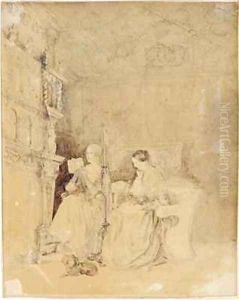Parthenope Nightingale (Lady Verney) Paintings
Parthenope Nightingale, also known as Lady Verney, was born in 1819 in Naples, Kingdom of the Two Sicilies (now Italy). She was the elder sister of Florence Nightingale, the famous nurse and social reformer. The name 'Parthenope' was derived from an ancient name for the city of Naples, reflecting the circumstances of her birth during her parents' extended European honeymoon. Her family was wealthy and well-connected, which afforded her a broad education and access to the cultural milieu of the time.
Parthenope shared some of her sister's passion for social causes but was more inclined towards literary and artistic pursuits. She was a talented writer and artist in her own right. Throughout her life, she maintained a close relationship with her sister, Florence, although their paths diverged significantly in terms of their professional and personal lives.
In 1858, Parthenope married Sir Harry Verney, a widower and Liberal Member of Parliament, becoming Lady Verney. As a result, she became more involved in the political and social circles of Victorian England. Her marriage brought her into the role of a stepmother to Sir Harry's children from his previous marriage and later, the couple had two children of their own.
While not as publicly renowned as her sister, Parthenope contributed to the arts and literary world through her writings and her support of her sister's work. She sometimes assisted Florence with her numerous projects, offering both moral and practical support, especially during times when Florence faced health issues or overwhelming stress from her reform campaigns.
Parthenope Nightingale's life was one of both privilege and purpose, as she navigated the expectations of Victorian society while also engaging with the cultural and social issues of her time. She passed away in 1890, leaving behind a legacy intertwined with that of her famous sister's, yet distinct in her individual contributions to the arts and literature.



